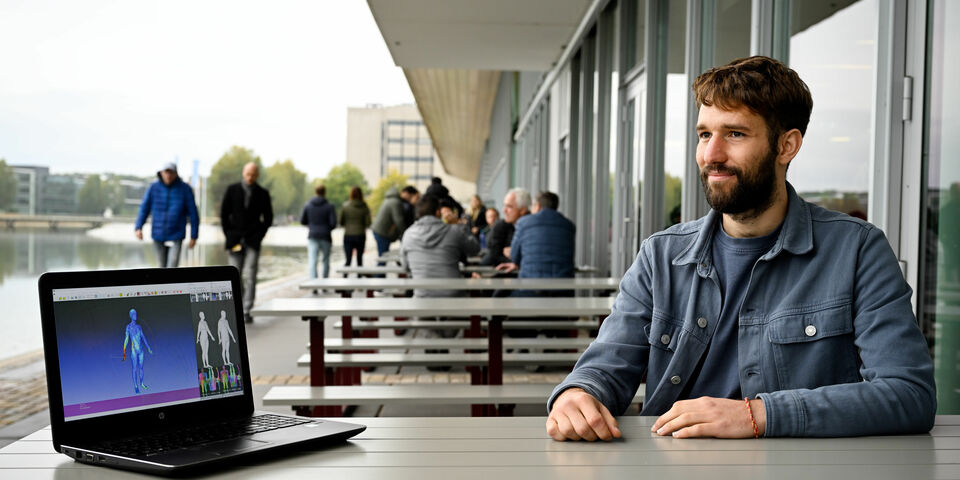Home Stretch | Skin and hair in 3D
With just a scan of your face and a little basic data, such as height and weight, mathematician Alessio Gallucci can produce a complete body scan. To improve the 3D analysis of our skin he used deep learning techniques. 3D analysis helps us to epilate and shave, but doctors use it too. It can help them with things like establishing the right drug dosage. Gallucci recently received his doctorate from the Department of Mathematics and Computer Science.
Algorithms are probably not uppermost in your mind when you're standing before the mirror, doing your best to give your beard a stylish trim. Yet for the past four years Alessio Gallucci has worked hard to make it easier for you in front of that mirror. While doing his master's internship, he realized that applied research is where his heart lies, provided that now and then he can go deep into the science. And so a combined PhD program at Philips Research and the Department of Mathematics and Computer Science seemed made to measure for him. As an active member of the Philips PhD Community, Gallucci subsequently sought a network of new friends, having left his Italian 'clan' behind. On his PhD path he engaged in excellent science and discovered a little spirituality, he tells us enthusiastically. “There's some stress involved in doing a PhD, but I was feeling the effects more than most due to some physical issues I have. I started to explore the healing power of the body and through meditation and yoga, I found my inner Zen. It's been a bonus of my PhD period.”
Stylish beard
Let's get back to the skin. “There are many advantages to being better able to map human skin,” Gallucci explains. “Of course it's nice to be able to produce a fine-looking beard – he strokes his own ‘growth’ and winks – but in the medical field, too, new technology is creating more possibilities. Broadly speaking, my project relates to two areas of application: the skin's form globally and locally. This involved looking in both 2D and 3D.
A global estimate of the surface area of the skin or of the body's form can be an important tool for medical specialists. For example, when they are determining how much skin has been burned for a patient with severe burns. Or when calculating the right amount of chemotherapy based on the patient's total body surface area. Too often, says Gallucci, current estimates lead to inaccurate results. A full body scan offers the necessary precision but is costly and generates a lot of data. “And so we produced a model capable of determining the body's form based on the form of the person's face and a little basic data, such as age, weight and height. And it worked. The method is very accurate and produces results very similar to those achieved with a full body scan.” No two skins are the same of course, Gallucci emphasizes, and you have to be alert to bias arising from the predominance of white men among test subjects. “A closer approximation of true diversity could be achieved in future by using more datasets gathered from people of different nationalities and with different skin colors.”
Skin cancer
Gallucci has also examined human skin in detail. “Artificial intelligence can be a great help in diagnosing skin cancer. When is a suspicious-looking mole harmless, and when it is the start of a tumor? We need to train computer systems and feed them with lots of images in order to keep on improving the algorithms. We also studied how we can improve the deep learning we're using with this application, and we looked at how we can generate artificial images of skin conditions in order to facilitate the learning process.” As well as using his computer vision methods to classify potentially malignant skin disorders, Gallucci programmed the software to count body hairs with great accuracy. While this can be useful for improving personal grooming devices like shavers and epilators, he also shows that when artificial neural networks are trained, the quantity of body hair ceases to be an obstacle to analyzing a suspicious-looking patch of skin.
Gallucci admits he loves looking at human skin. “A person's skin has so much to tell us, just think of your grandma's wrinkled skin, aged by the sun and wind. But it's faces that fascinate me most. Blushing cheeks, laugh lines, worry wrinkles… our faces give away so much without a word being spoken. And even though my project is finished, I'm not done looking at skin.”




Discussion